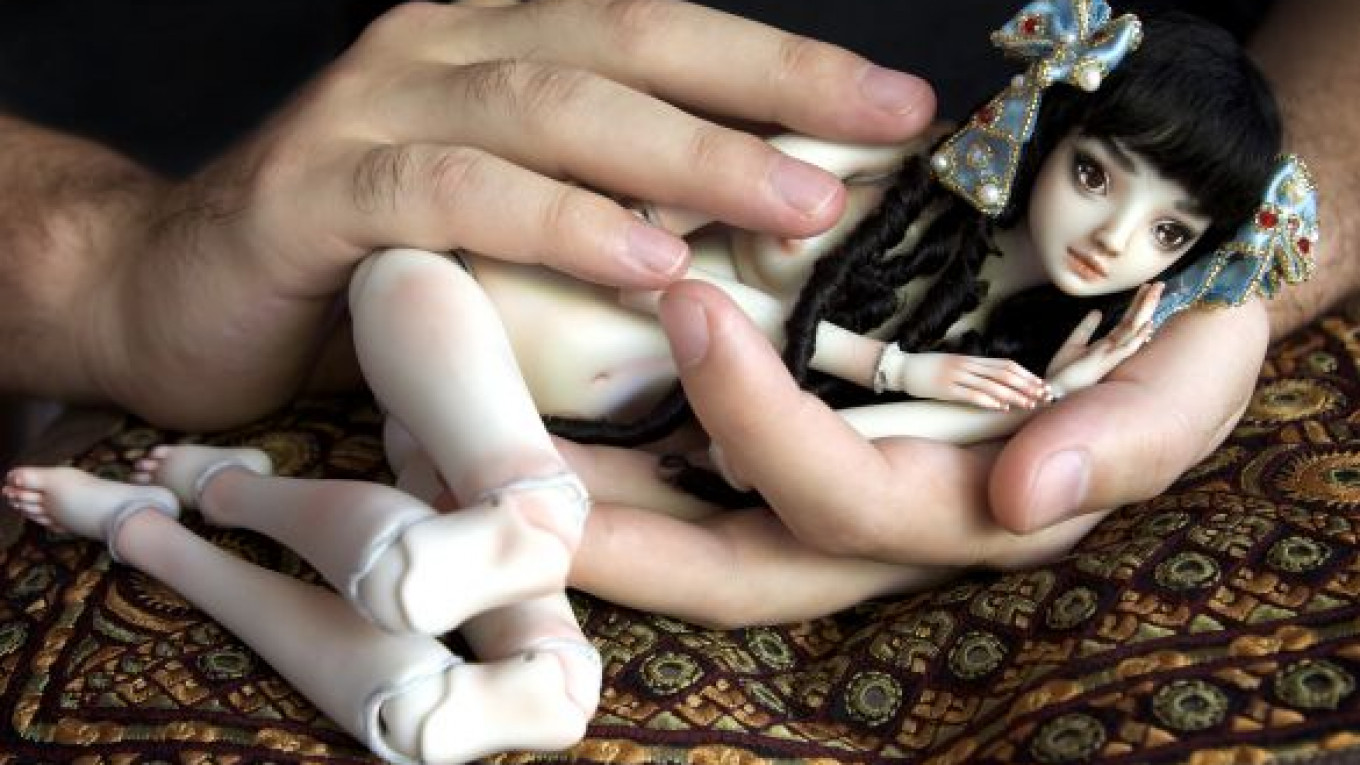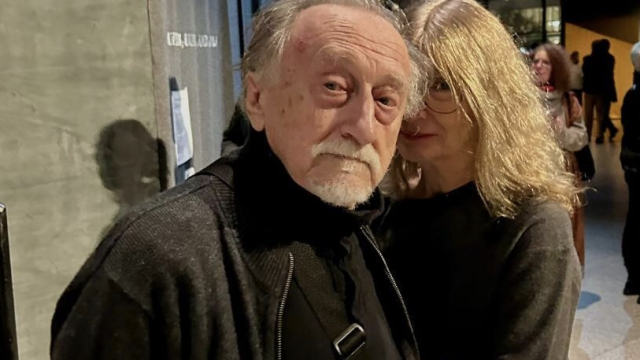When their hands and eyes meet, a fairytale is born. And it seems of little importance that one of them is human while the other is made out of fabricated materials.
The interest in art dolls, which are used as decorative pieces rather than toys, is mostly based on the charm of this mysterious interaction between the artist and his doll during the doll's creation.
The mystery is born in the hands of the doll masters — a process when the word "doll" breathes with the new meaning of "art."
"The character appears in each doll at the stage of polishing the porcelain," said Tatyana Trifonova, a Moscow-based porcelain doll artist. "Once I made a cat-like doll with teeth. She was very moody from the outset and at each stage of working on her she showed me her unfriendly character, … she broke during her first photo shoot."
Marina Bychkova, a Russian-Canadian artist and founder of the Enchanted Doll label, said she doesn't think dolls are alive, though this doesn't seem to make them any less striking.
"Dolls are just objects, but they are very powerful objects, which we imbue with feelings and personalities. They are vehicles for human emotions and projections of our identities," she said. "I think that I begin to sense [the doll's] personality once I paint its eyes. They are a window to the soul, not the soul of the doll, but my own soul."
The crafting of decorative dolls emerged as an independent art form in Russia in the 1990s. This was a time when seismic shifts in Russian politics and economics led to cuts in state funding for art. Artists were forced to look for new, profitable avenues for their talents and, in this search, stumbled through the looking glass into the enchanted wonderland of their future creations.
'I'm always pursuing the dream of creating the perfect doll.'
Marina Bychkova
Doll artist
Today, collecting dolls is one of the most fashionable and fast-growing genres of contemporary art. Many doll galleries have opened; magazines and books on the subject have been published; and exhibitions have been organized in Moscow and St. Petersburg. There are now also schools and courses that teach aspiring artists how to create their own fantasy characters.
The interest to Russian-made art dolls extends beyond the boundaries of the country.
"My collectors live all over the world, with the exception of perhaps, Antarctica," Bychkova said. "Having emerged from decades of political turmoil, Russia is now undergoing a wonderful renaissance of art and culture, with regular, working people reaching out for and collecting expensive art. It's incredible."
Trifonova said the collectors who buy her porcelain dolls today are split equally between Russia and Europe, with most of the European buyers coming from France. On the other hand, Natalia Lepikhina, a doll artist and ceramist who lives in Almaty, said her dolls mostly interest collectors from Russia and Central Asia, while she sees little interest from Europe.
There are plenty of collectors in Russia as well, for which this passion for dolls has turned into an exquisite and expensive hobby.
Bychkova's prices for porcelain pieces range from $15,000 to $30,000 for nude dolls and go up to $50,000 for those in costumes. The artist has also just released a handmade line of resin Enchanted Dolls in the $2,000 range. Right now, the wait list for a resin doll is about a year long and growing.
The price is determined by the number of hours the artist spends on each doll and the cost of its materials. Since porcelain is the most time-consuming material to work with, it is also the most expensive one.
Marina Bychkova spends 500 hours to craft one doll. She started to make porcelain dolls in 2006 and is now one of the most famous artists of this genre in the world.
Trifonova started to make dolls less than two years ago. Today the prices for her creations start from $1,000. As for most doll artists the hobby also serves as her financial backup plan, but at a time-sensitive price. The architect Trifonova spends up to 10 months creating each doll, usually working at night time.
And it seems that in these late hours, the dolls sometimes become her close companions.
"I don't like to give dolls smiles and try not to make openly sad faces. I'm trying to make the faces neutral and to have the emotions in the face change when the doll is in different positions. Then the doll becomes alive for me," Trifonova said, adding that for her doll making is not only a business, but also a way to express herself when the regular working day ends.
The steady growth of adepts in this kind of hobby raises the problem of intellectual property rights with plagiarism becoming a hot topic in the doll masters society. One artist recently posted the initial design of a future doll on her Live Journal account just to avoid any possible accusations of having stolen someone else's idea.
Bychkova has a more philosophical approach to this problem.
"I think there are no truly original ideas. We all, without exception, subconsciously copy and borrow from each other to some extent," she said. "I don't begrudge those who borrow from my style and implement it with their own twist."
Yana Boyeva, the doll master who makes original textile dolls with elements of plastic or paper mache and works equal time in Russia and Estonia, said she preferred books to dolls during her childhood and continues to dive back into them when she's looking for fresh inspiration.
"While I perceived them as children's toys, they were totally uninteresting for me, but when I realized that they can be an art, I became curious and I started to craft them," Boyeva said.
That vision of the dolls as, primarily, a complex and rewarding form of artistic expression, is what seems to be driving the other artists forward as well, sometimes to the highest aim.
"I make dolls not because I enjoy playing with them, but because I enjoy problem solving," Bychkova said. "I'm always pursing the dream of creating the perfect doll. One day I will make it."
Contact the author at p.kvar@imedia.ru
Related articles:
A Message from The Moscow Times:
Dear readers,
We are facing unprecedented challenges. Russia's Prosecutor General's Office has designated The Moscow Times as an "undesirable" organization, criminalizing our work and putting our staff at risk of prosecution. This follows our earlier unjust labeling as a "foreign agent."
These actions are direct attempts to silence independent journalism in Russia. The authorities claim our work "discredits the decisions of the Russian leadership." We see things differently: we strive to provide accurate, unbiased reporting on Russia.
We, the journalists of The Moscow Times, refuse to be silenced. But to continue our work, we need your help.
Your support, no matter how small, makes a world of difference. If you can, please support us monthly starting from just $2. It's quick to set up, and every contribution makes a significant impact.
By supporting The Moscow Times, you're defending open, independent journalism in the face of repression. Thank you for standing with us.
Remind me later.






